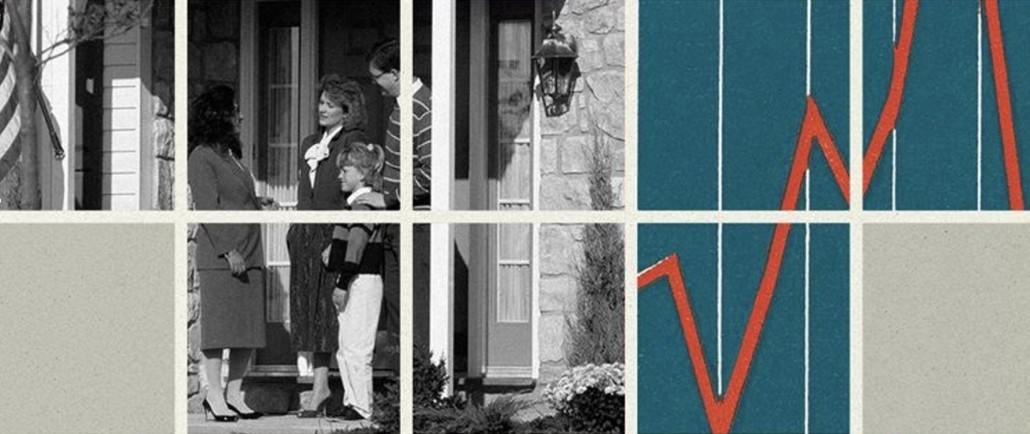Amazingly, 2023 Is Not the Most Unaffordable It’s Ever Been To Buy a Home—Not Even Close!

Jul 10, 2023
Yes, we’ve all heard it. Buying a home today might seem like the most unaffordable, and therefore impossible, it’s ever been. Home prices are near record levels, pushed up by bidding wars erupting on anything well-situated and move-in ready. Plus, mortgage rates are nearing 7%.
But here’s the thing: The baby boomers had it worse.
In May of this year, the typical buyer spent just under a third of their household income, about 32.8%, on housing. As uncomfortable as that might be, it’s not even close to how much buyers plunked down in the early 1980s.
In 1981, the same year the AIDS virus was identified, the Iran hostage crisis came to an end, and “Raiders of the Lost Ark” topped the box office charts, homebuyers that September and October spent 51.3% of their household income on their mortgage payments.
Let that sink in for a moment.
Furthermore, that percentage doesn’t even include what they paid for utilities, property taxes, insurance costs, and homeowners association fees.
Buying a home is “not as unaffordable as it’s ever been,” says Realtor.com® Chief Economist Danielle Hale. But, “in the grand scheme of things, housing is pretty unaffordable right now.”
To figure out how affordable buying a home has been over the past 50 years, the Realtor.com data team analyzed data going back to 1973. We looked at monthly existing single-family home prices from the National Association of Realtors®, weekly mortgage interest rates for 30-year fixed loans from Freddie Mac, and median annual household income from the U.S. Census Bureau. Then we calculated the typical mortgage payment of a buyer taking out a loan on the median-priced home and what percentage of their household income that would eat up.
The analysis doesn’t factor in regional price differences, new construction, or the percentage of income that individual buyers spent on homes.
“If you go back in history, you can find a period where housing is more unaffordable than it is now,” says Hale. “But you have to go back almost 40 years.”
Why today’s buyers wouldn’t want to purchase a home in 1981
In the fall of 1981, homes were cheap by today’s standards.
The typical single-family home cost just $66,125—about six times less than the cost this past May, according to the most recent data from NAR.
However, the typical household was bringing in only about $19,074 in 1981, according to U.S. Census Bureau data. And mortgage rates topped 18% that fall. (And you thought 7% was rough.)
Those turbo-sized rates meant that 99.5% of a buyer’s first year of mortgage payments was going toward just the towering amount of interest on the loan. The buyer didn’t pay down 10% on the principal of the balance until the 18th year of the loan, assuming the buyer didn’t refinance—which most buyers did. (This calculation includes a 20% down payment.)
Today’s average family is earning about $73,505 a year. But in May, they were contending with median existing-home prices of $410,100 and mortgage rates hovering in the mid-6% range and which have since risen to the high 6% territory. About 85% of their first year’s mortgage payments is going to interest.
One important difference is that instead of waiting nearly two decades to have 10% of their principal paid off, they achieve that milestone by year seven.
“Mortgage rates play a really substantial role in how affordable housing is at any time, especially since so many buyers buy with a mortgage,” says Hale.
Uncomfortable similarities between 1981 and 2023
There are a few similarities between then and now. Inflation was soaring in the early ’80s, causing the U.S. Federal Reserve to hike interest rates. (Sound familiar?) The nation was also in a full-blown recession in 1981. Fast-forward 42 years, and the nation appears to be flirting with another downturn.
The number of home sales slowed in the early 1980s as well as in this post-pandemic housing market as fewer folks can afford to buy due to higher mortgage rates.
Then, as now, most of those purchasing homes earn more than the median income—unless they had very generous family members, stock options, or trust funds. Or they’re existing homeowners who can put the equity they built in their last home into their new one.
“Boomers have been saying things were harder when we were young for a long time. And in some respects, they are right,” says Hale. “But in other respects, they don’t have the same amount of student loan debt and child care costs that young people have today.”
Plus, once mortgage rates fell, most folks who purchased homes in the early 1980s had refinanced their loans to lock in the new rates and “drastically” lower their monthly mortgage payments. By 1986, rates had fallen back down to the single digits.
Recessions and pandemics may be good times to buy homes
As counterintuitive as this may seem, recessions may be financially advantageous for buyers to purchase homes—if they remain employed and have the funds to do so. That’s because interest rates usually (but not always, as the early 1980s demonstrated) fall during economic downturns. That makes homebuying more affordable.
Over the past 50 years, homes were the most affordable as the country climbed out of the Great Recession. In early 2012 and 2013, buyers were spending about 14%—or less—of their income on a home. That’s because mortgage rates were below 4%.
The same thing happened in the early days of the pandemic. The economy ground to a halt as stay-at-home orders proliferated and mass layoffs ensued. To stimulate the economy, the Fed cut interest rates and mortgage rates fell below 3%—for the first time ever.
Those low rates triggered the big run-up in prices and offset those gains. Since buyers were spending less on interest, they could afford to purchase more house. The result? In spring 2020, buyers were spending just under 18% of their income on housing.
“Affordability is one of the factors that kicked off the buying frenzy that we saw in the early part of the pandemic,” says Hale.
It wasn’t until mortgage rates climbed above 4% in March 2022 that buyers began to get priced out. That month they spent just under 25% of their income on housing. As rates ticked up and affordability worsened, more buyers left the market and fewer homes went up for sale (as sellers didn’t want to give up their low rates).
The situation has only gotten worse, with buyers spending nearly a third of their income on housing in May.
“When housing is unaffordable, it’s very tempting to stretch your budget,” says Hale. But with inflation, rising property taxes, and high energy bills, “now’s probably not a good time to do that.”
Clare Trapasso is the executive news editor of Realtor.com where she writes and edits news and data stories. She previously wrote for a Financial Times publication, the New York Daily News, and the Associated Press. She also taught journalism courses at several New York City colleges. Email clare.trapasso@realtor.com or follow @claretrap on Twitter.
